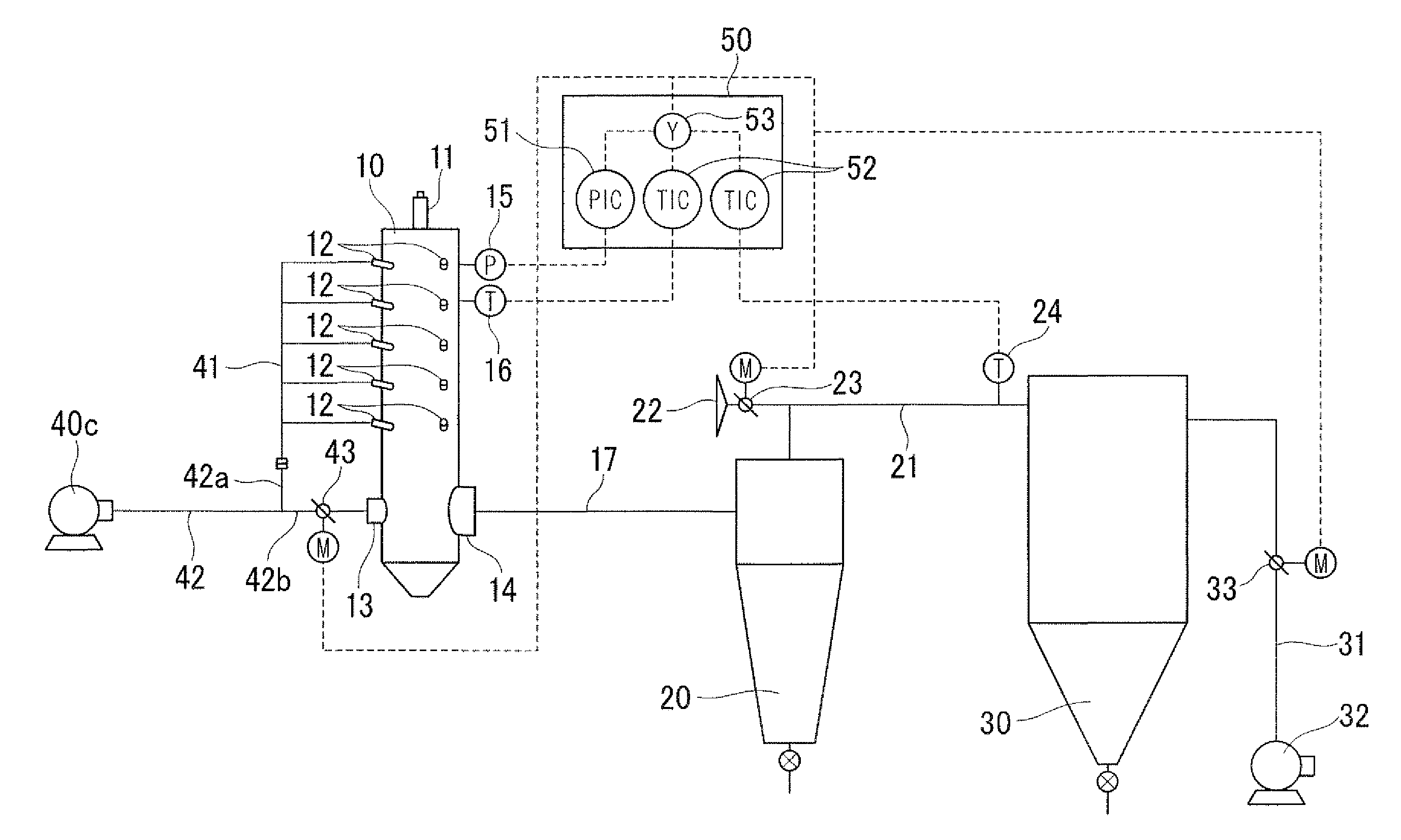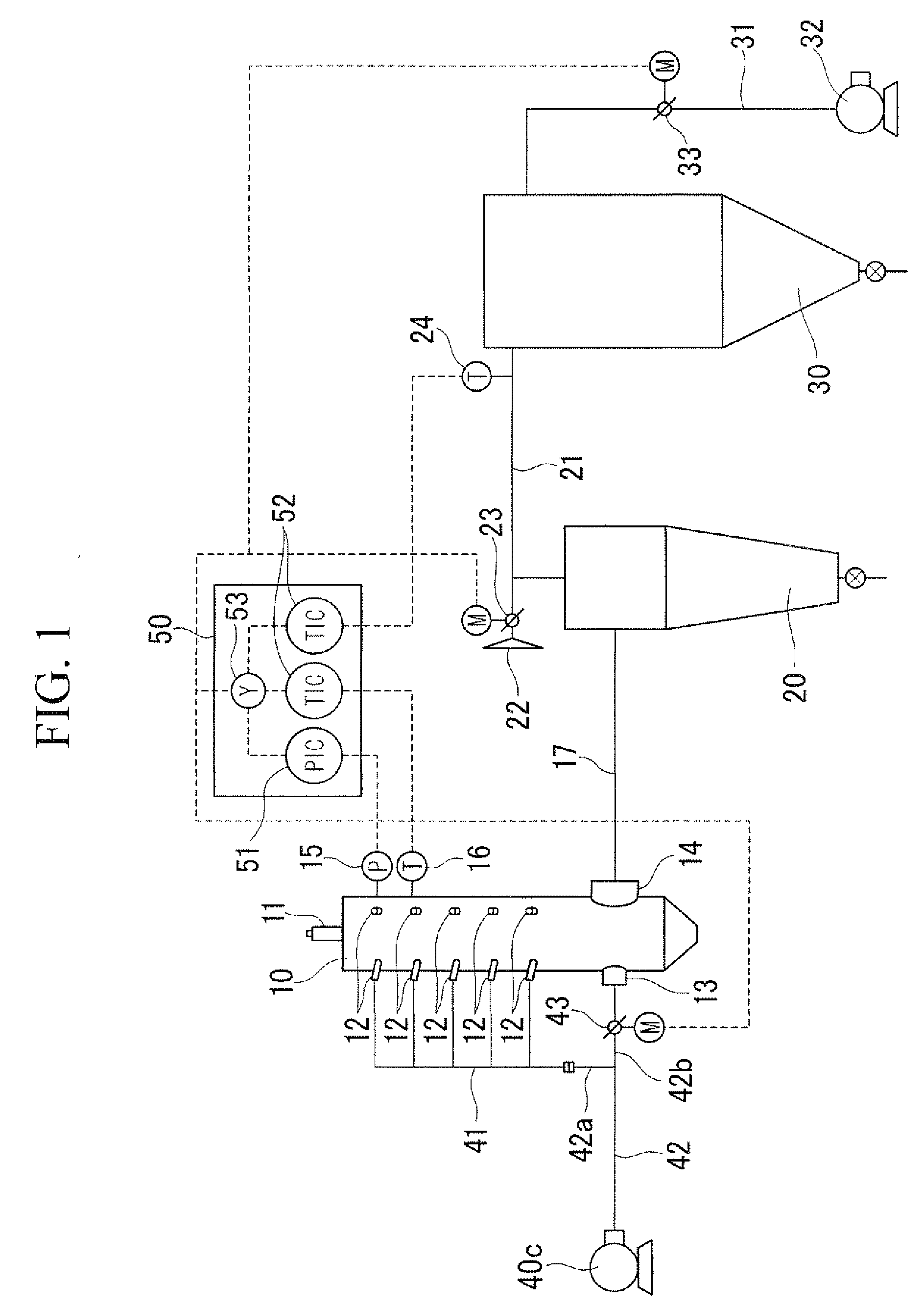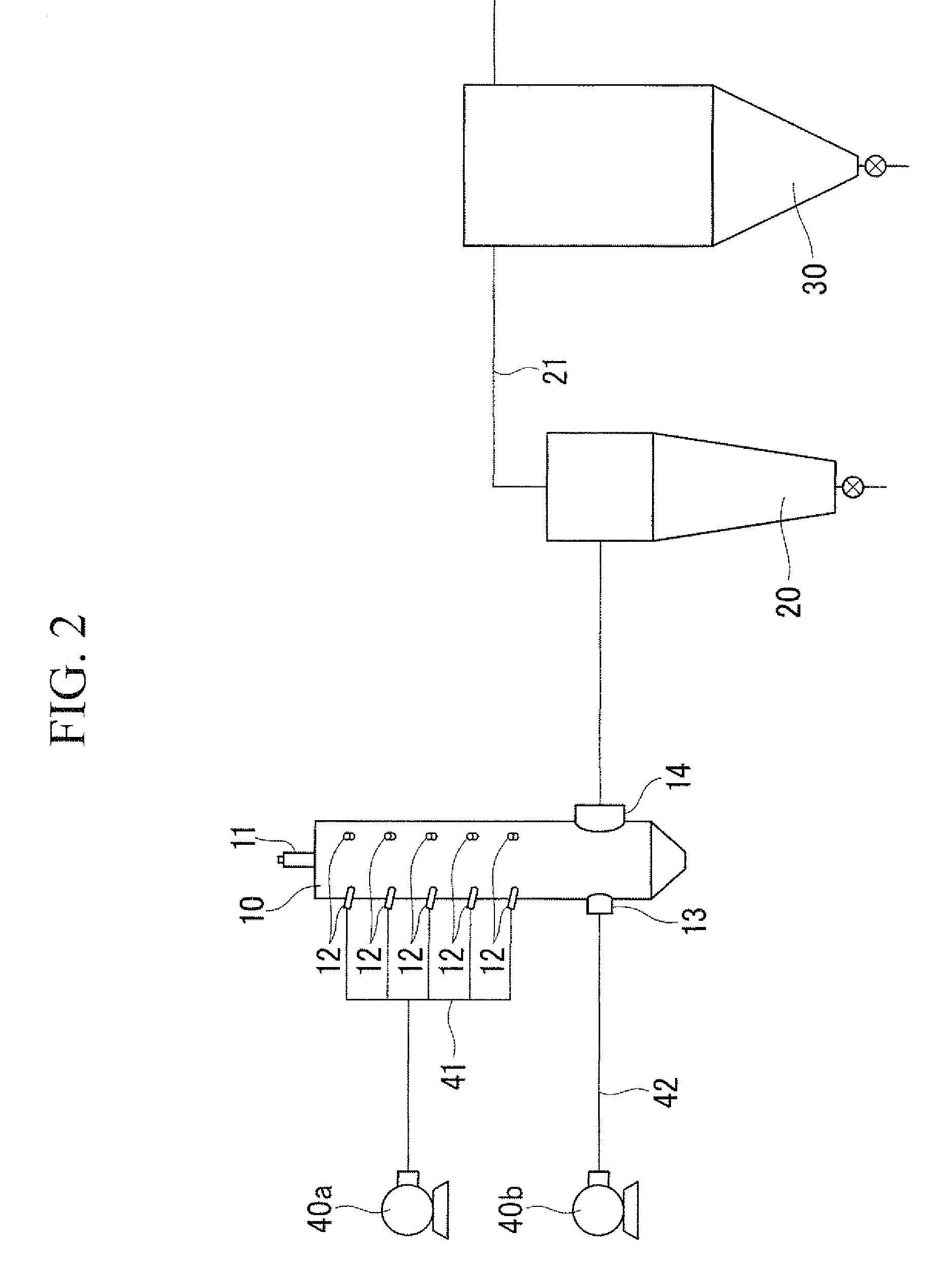Sphering apparatus and operating method thereof
a technology of spherical apparatus and operating method, which is applied in the direction of glass rolling apparatus, instruments, manufacturing tools, etc., can solve the problems of difficult to equalize qa and qb, difficult to always maintain a constant q, and difficult to make the right timing for increasing and decreasing quantities
- Summary
- Abstract
- Description
- Claims
- Application Information
AI Technical Summary
Benefits of technology
Problems solved by technology
Method used
Image
Examples
example 1
[0051]In Example 1 the particle production tests were carried out using the sphering furnace of the present invention represented by FIG. 1 and the conventional sphering furnace represented by FIG. 2, and both tests were compared.
[0052]As the furnace 10, a furnace was used with an inner diameter of 600 mm and a height (length) of 3,000 mm, on the inner wall of which four vertical rows of the adhesion-preventing air-introducing holes 12, 12, were formed along the circumferential direction and five of the adhesion-preventing air-introducing holes 12, 12, . . . were formed in each of the vertical rows. Adhesion preventing-air was blown at 100 Nm3 / h through each of the adhesion-preventing air-introducing holes 12, 12, . . . so as to evenly distribute adhesion preventing-air on the inner wall of the furnace 10.
[0053]As raw material powder, silica powder was used.
[0054]In the case of producing spherical silica particles, the preferable temperature range and pressure range at the upper par...
PUM
 Login to View More
Login to View More Abstract
Description
Claims
Application Information
 Login to View More
Login to View More - R&D
- Intellectual Property
- Life Sciences
- Materials
- Tech Scout
- Unparalleled Data Quality
- Higher Quality Content
- 60% Fewer Hallucinations
Browse by: Latest US Patents, China's latest patents, Technical Efficacy Thesaurus, Application Domain, Technology Topic, Popular Technical Reports.
© 2025 PatSnap. All rights reserved.Legal|Privacy policy|Modern Slavery Act Transparency Statement|Sitemap|About US| Contact US: help@patsnap.com



